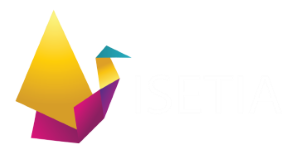 CORRESPONDING MODULE
CORRESPONDING MODULE
ISETIA OFFERS A CORRESPONDENCE MODULE AS PART OF ITS CONSTRUCTION MANAGEMENT PLATFORM. THE CORRESPONDENCE MODULE IS DESIGNED TO STREAMLINE COMMUNICATION AND DOCUMENT CONTROL WITHIN CONSTRUCTION PROJECTS. IT PROVIDES A SECURE AND AUDITABLE SYSTEM FOR MANAGING PROJECT-RELATED CORRESPONDENCE AND DOCUMENTATION.
Corresponding module, in the context of project management or software systems, refers to a specific module or component within a larger system that corresponds to a particular functionality or aspect of the overall system.
HERE ARE SOME KEY FEATURES AND CAPABILITIES OF THE CORRESPONDENCE MODULE IN ISETIA:
1. Correspondence Management: The Correspondence module allows users to send, receive, and track project-related correspondence and attachments directly within the ISETIA platform. It centralizes all project communication, making it easy to search, organize, and reference past correspondences.
2. Document Attachments: Users can attach project documents, drawings, specifications, and other relevant files to their correspondence items. This ensures that all relevant documentation is accessible and associated with the corresponding communication.
3. Distribution Lists: ISETIA allows users to create distribution lists to simplify the process of sending correspondence items to specific groups of recipients. This feature helps ensure that project updates and communications reach the right stakeholders.
4. Review and Approval Workflow: The Correspondence module includes workflow functionality that enables users to assign tasks, track approvals, and monitor the progress of correspondence items. This helps streamline the review and approval process for project-related documents and ensures accountability.
5. Document Control and Versioning: ISETIA provides robust document control capabilities within the Correspondence module. It maintains a full version history of attached documents, allowing users to access and review previous versions as needed.
6. Notifications and Alerts: Users can set up notifications and alerts to stay informed about new correspondence items, responses, or specific activities related to their communication. This feature helps improve communication efficiency and ensures timely responses.
7. Audit Trail and Reporting: ISETIA keeps a detailed audit trail of all correspondence items, including sender, recipients, attachments, timestamps, and any actions taken. This information can be accessed for reporting, compliance, and dispute resolution purposes.
The Correspondence module in ISETIA serves as a comprehensive communication and document management tool, enabling project teams to maintain efficient and transparent communication throughout the construction project lifecycle.
BENEFIT OF CORRESPONDING MODULE:
ISETIA Corresponding modules provide several benefits in managing projects effectively. Here are some key benefits of corresponding modules in a ISETIA system:
1. Streamlined Workflows: Corresponding modules in a ISETIA help streamline project workflows by providing dedicated functionalities for specific project management tasks. Each module focuses on a particular aspect of project management, making it easier to manage and execute those tasks efficiently.
2. Improved Efficiency: By having dedicated modules for different project management functions, ISETIA systems allow users to work more efficiently. Users can access the specific tools and features they need for their respective tasks, minimizing the time and effort required to navigate through a comprehensive system.
3. Centralized Data Management: Corresponding modules contribute to centralized data management within a ISETIA system. Each module stores relevant data and information related to its specific function. This centralized approach helps ensure data integrity, consistency, and accessibility, as all project-related information is stored in a single system.
4. Enhanced Collaboration: ISETIA systems with corresponding modules facilitate better collaboration among project team members. Each module provides tools and features that enable effective communication, document sharing, task assignments, and progress tracking, fostering collaboration and information sharing across the project team.
5. Improved Decision-Making: Corresponding modules provide valuable insights and information for making informed decisions. For example, modules for cost management, schedule management, and risk management offer data and analytics that assist in evaluating project performance, identifying potential issues, and making data-driven decisions to mitigate risks and optimize project outcomes.
6. Customization and Scalability: ISETIA systems with corresponding modules offer flexibility and scalability. Organizations can customize the system by selecting and configuring the modules that align with their specific project management needs. As projects evolve or new requirements emerge, additional modules can be integrated into the system, ensuring scalability and adaptability.
7. Reporting and Analytics: Corresponding modules in a ISETIA system often include reporting and analytics capabilities. These modules generate comprehensive reports, charts, and metrics that provide insights into project performance, resource allocation, budget utilization, and other key performance indicators. These reports support informed decision-making and facilitate effective communication with stakeholders.
Overall, corresponding modules in a ISETIA system provide a structured and organized approach to project management, enhancing efficiency, collaboration, data management, and decision-making throughout the project lifecycle.
The corresponding module in ISETIA is seamlessly integrated with ISETIA Documents, Workflow, and Process Module, making it a powerful tool. Users have the capability to open Revit, P6, DWG, Tekla, Sketchup files without requiring a native license. They can select any 3D object or activity from the model and create corresponding correspondence, allowing them to effectively track its status.


